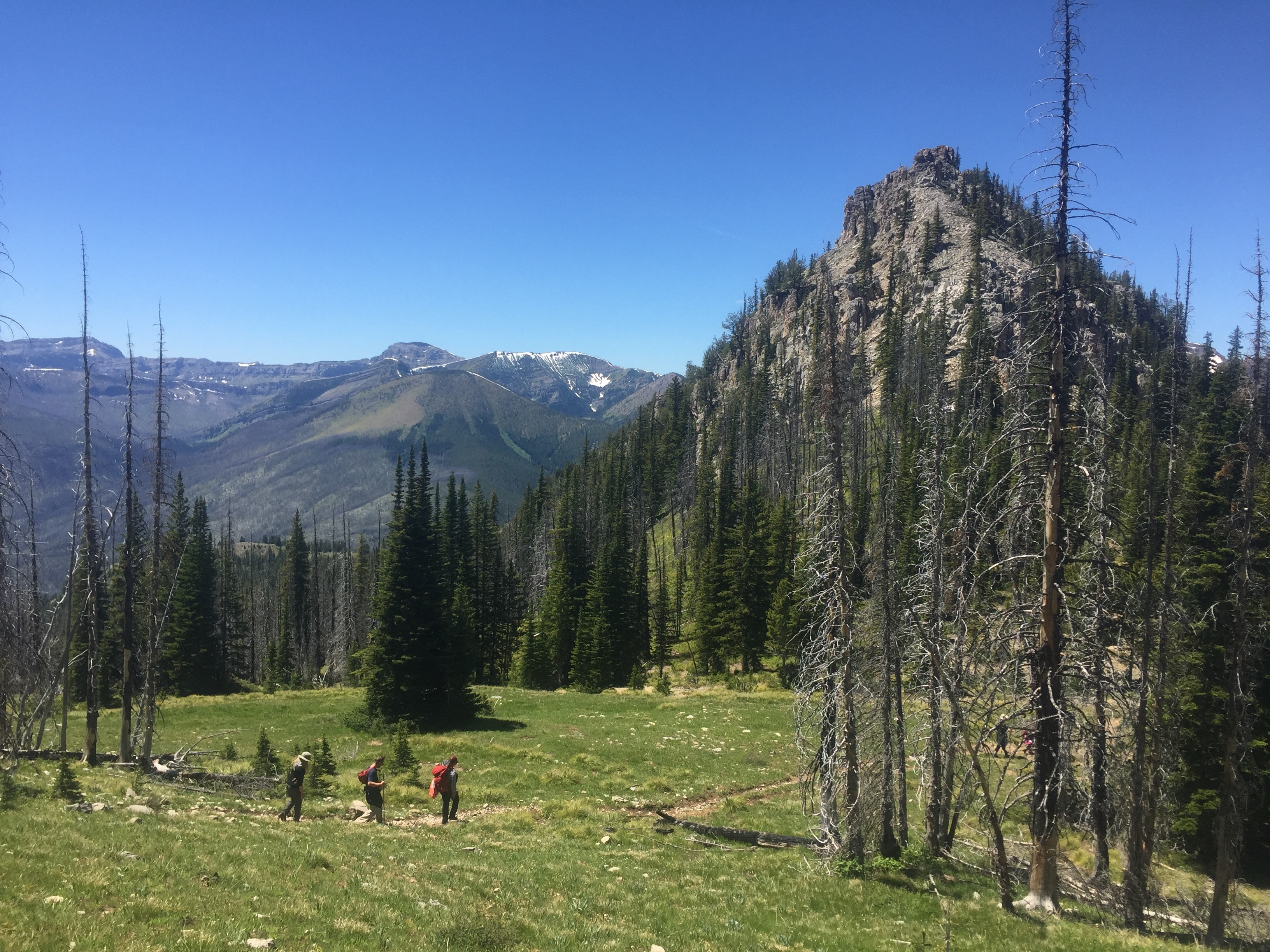
Everything that arises, decomposes. This is a simple, but overlooked reality of life. At first this may seem like a depressing thought, but when it settles in you realize it’s actually quite freeing. In fact, when you look at it from an ecological perspective it is a beneficial thing.
When we started out on our 35 mile backpacking journey through the Bob Marshall Wilderness we saw large swaths of burnt forest. We noticed that beneath these charred, dead trees were a variety of new plants including fields of strawberry, aspen, armies of young lodgepole pine, and many other low-lying shrubs. An important aspect to this successful forest re-growth was the mosaic the fire had created when it went through about seven years ago. When a fire burns a mosaic pattern, some areas are burned heavily, other areas are burned lightly and some areas are not burned at all. Later, we learned that habitat disturbance and subsequent rejuvenation is called succession and is essential for the continuing health of an ecosystem. Five weeks later, this lesson has come full circle with a reading on “panarchy,” which gives new meaning to the importance of rejuvenation in an ecosystem.
Panarchy is a theory proposed by Buzz Holling that states that all systems go through a phase of growth, a decrease in resiliency, a regrowth period, collapse, and then (hopefully) rejuvenation. This “new” system can be a little bit different, entirely different, or anywhere in between. According to Holling’s observations everything goes through this cycle, from the microscopic bacterial cycles that happen on the microsecond scale to the global climate cycles that happen on an epoch time scale. When these cycles are aligned, collapse events can be lined up, causing the rejuvenation process to become a lot harder.
In the Purcell Mountains, we saw this theory enacted first hand where whitebark pine was heavily infested by the mountain pine beetle. From afar it looked like an extremely hot and devastating fire went through, but as we came closer to the trees infected we could see the excessive sap on the trees that came down in defense and the many demarcations in the bark from successful sabotages. A warming global climate allowed for the mountain pine beetle to expand into whitebark pine habitats with populations that seemed to be growing exponentially. Specifically, the warming climate allowed lodgepole pine, a common attractor of mountain pine beetle, to grow into higher elevations where whitebark pine would normally grow exclusively. The increasingly warmer temperatures allowed for the mountain pine beetles to overwinter when they usually would be killed by frost and extended periods of subzero weather as well, exacerbating the problem. This aligning of “collapse events” is what leads to situations similar to that of the mountain pine beetle and whitebark pine– it makes the destruction a lot stronger and recovery nearly impossible.
Similarly, panarchy systems thinking can be applied to our society’s system of thought. In Western cultures, we often have this incessant drive to take more than we need. If we stay rigid in this thought and practice, we could be aligning collapse event cycles— global warming, deteriorating environments, diminishing energy sources… the list goes on. However, if we change our ways and start respecting the environment by working to give back more than we take from it, then we will have the chance of recovery and revitalization when the winds of collapse blow in. Just like the Bob Marshall forest that was able to rejuvenate because of its fire mosaic, our societal rejuvenation will be manageable if there are pockets of strong, localized, and environmentally thoughtful communities.